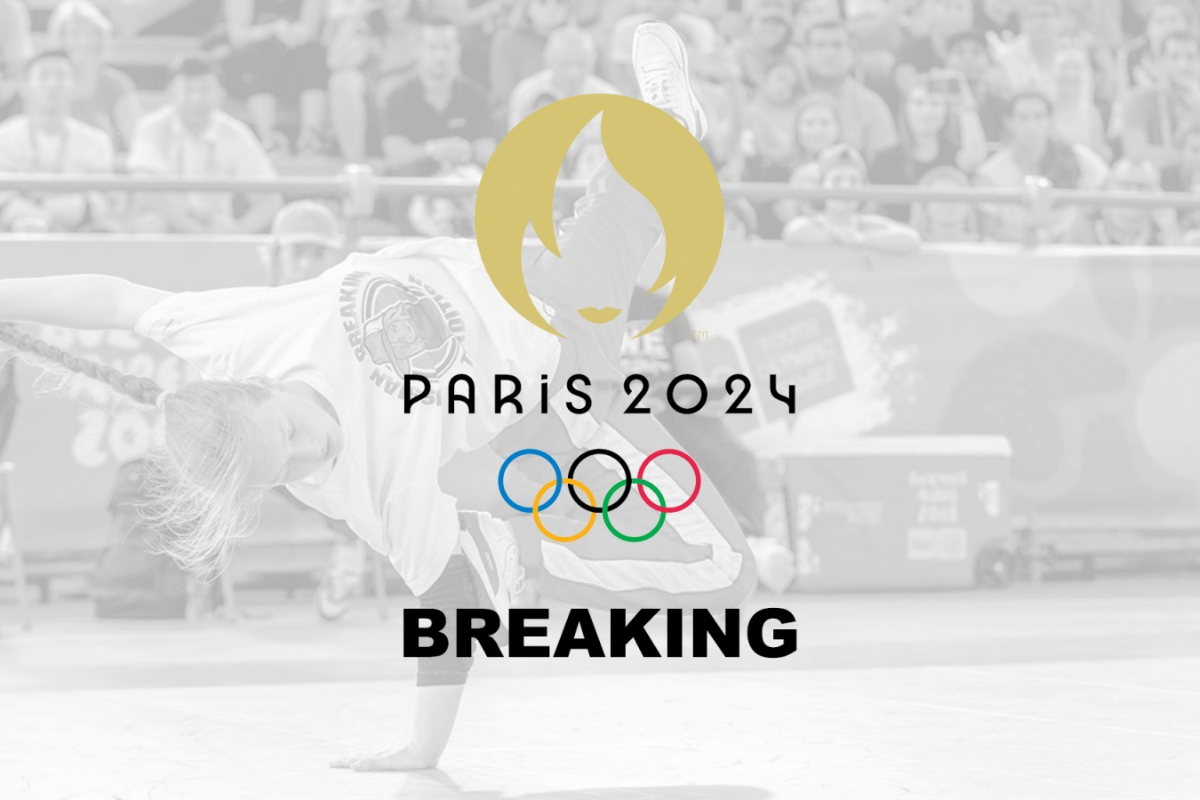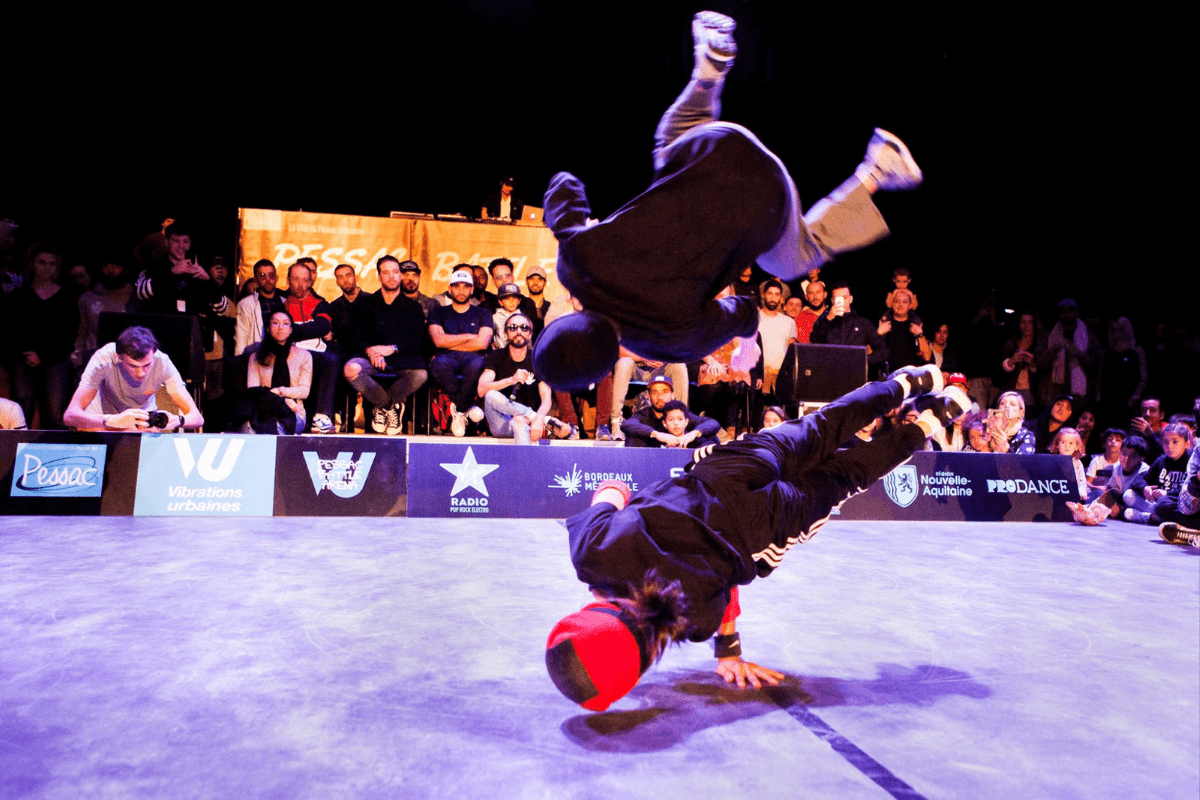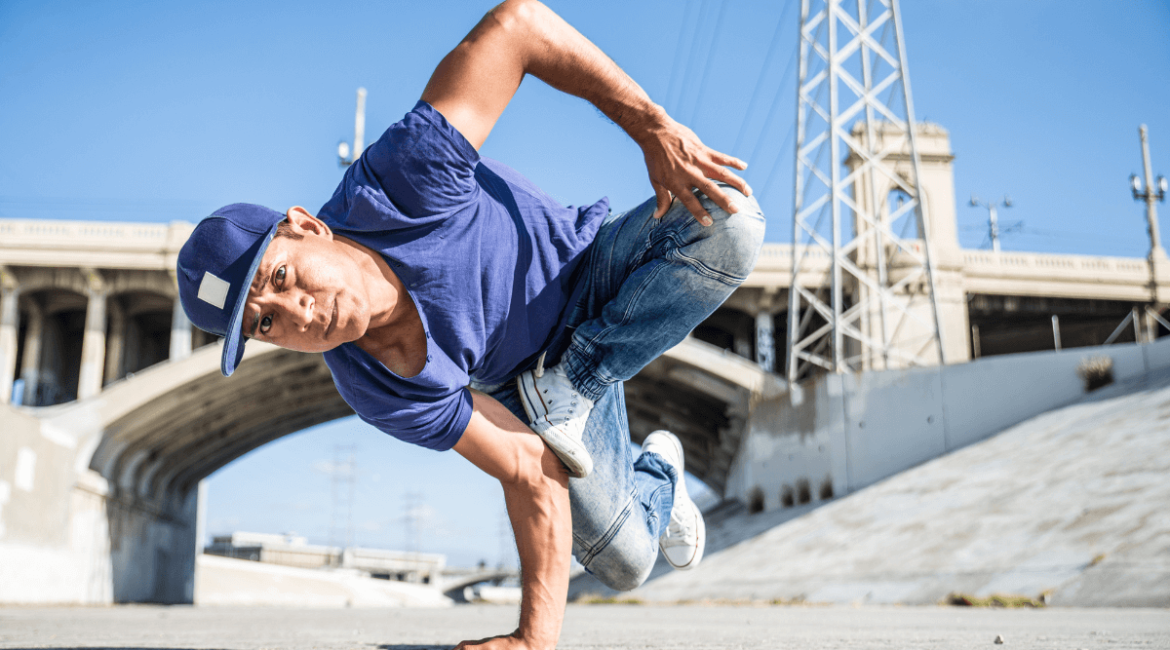As we continue our adventure into the exciting world of breakdancing, we’re diving even deeper into the next basic dance moves – other elements mentioned in the previous blog that set the stage for mastering this awesome dance style. In this blog, we covered the essential moves that are like the building blocks of breakdancing, and they’re super important for anyone looking to become a pro at this awesome art form.
Now, we’re stepping it up a notch by exploring the fundamental dance moves in breaking. So get ready to join us on this journey as we uncover the secrets behind some of the coolest moves in breakdancing. But first, let’s pick up some interesting facts that we didn’t go through in the previous blog!
Remarkable milestone of breakdancing
Breakdancing in the old days
What is the root of breakdancing? The roots of breakdancing can be traced back to the vibrant street culture of New York City, particularly in the Bronx borough, during the late 1960s and early 1970s. Breakdancing, also known as breaking, evolved from a combination of influences, including African-American and Latino dance traditions, martial arts, gymnastics, and other urban dance styles.
The exact origins of breakdancing are difficult to pinpoint, as it developed organically within these communities and was passed down through oral tradition and peer-to-peer learning. However, key figures and groups such as DJ Kool Herc, Afrika Bambaataa, and the Rock Steady Crew played significant roles in popularizing and shaping the early breakdancing scene in New York City.
Breakdancing emerged as a form of expression within the larger hip-hop movement, which encompassed various elements such as:
- DJing
- MCing (rapping)
- Graffiti art
- Dance
It was born out of the creativity and resourcefulness of young people living in marginalized communities, who found an outlet for self-expression through dance on the streets and in local dance clubs.
Now, even though breakdancing had been around for quite some time, it didn’t really hit the big time until the 1980s. That’s when pop artists and musicians started taking notice of this electrifying dance style and incorporating it into their performances.
Breakdancing became more widely recognized in the 1980s, thanks in part to media exposure through music videos, films, and television shows. It spread beyond New York City to other urban centers in the United States and eventually to countries around the world, where it continues to evolve and thrive as a dynamic form of artistic expression and cultural identity.
Suddenly, breakdancing was everywhere, lighting up dance floors and captivating audiences around the world. It was an exciting time for breakdancers as their art form gained widespread recognition and popularity.
Breakdancing moves’ journey to Olympics stage

Breakdancing has come a long way and is now recognized as an official discipline by the World DanceSport Federation (WDSF). This means it’s taken seriously on a global scale, with rankings and competitions happening all over the world.
In 2018, breakdancing made its debut in the Youth Olympic Games held in Buenos Aires, Argentina. And guess what? It’s set to make its first appearance at the Olympic level in Paris! That’s a huge deal for breakers everywhere.
Breakers who rank in the top 24 of the Olympic Qualifier Series will be among the world’s best 16 B-Boys and 16 B-Girls competing for the ultimate crown in August 2024. It’s going to be an epic showdown!
But that’s not all. Breaking is also making its first appearance in the Asian Games, adding even more excitement and opportunities for breakers to showcase their skills and passion on the world stage.
Basic dance moves in breaking (continue)
Power Moves

Power Moves are like the superheroes of breakdancing. They’re the moves that really grab your attention because they show off the breaker’s strength and skill.
But here’s the thing: Power Moves aren’t easy. They’re some of the toughest techniques out there. To do them well and safely, you need not only the right technique but also strong muscles. That means you’ve got to work on your strength and conditioning.
Before you dive into Power Moves, though, it’s important to master all the basic skills of breakdancing. Think of it like building a sturdy foundation before you start adding the fancy decorations. Once you’ve got those basics down, you’ll be ready to tackle the challenge of Power Moves! And trust me, it’s worth the effort to see those jaw-dropping moves in action.
- Windmill: The breaker drops down onto the floor and starts rolling around using their upper back, shoulders, and arms. Their legs shoot up into the air and swing around in a circle. It’s like watching a whirlwind of awesomeness!
- Shoulder Spin: It’s like a fancy version of the Back Spin. The breaker props themselves upside down on one shoulder, with their whole body weight balanced on that one arm. Then, they add a spin to the freeze, and boom, you’ve got the Shoulder Spin!
- Headspin: This move is a spinning headstand – yup, you heard that right! It’s a classic move that’s been wowing audiences since the ’70s, possibly inspired by those cool kung-fu movies.
- Floats: The breaker horizontally spins their entire body around, supported by just one arm. It takes some serious strength and skill to pull off this move without getting hurt.
- Flare: It’s another classic move where the breaker swings their legs and lower body around in a circle while balancing on one arm. It’s like watching a human whirlwind in action!
- Head Glide: Unlike the Head Spin, where the head is constantly spinning, the head only touches the ground briefly in the Head Glide. One hand supports the body and acts as the base for the spinning motion.
- Hand Glide: This move is a spinning, one-handed version of the Turtle Freeze. It’s all about balance and finesse!
- 1990: It’s done by doing a one-handed handstand and then spinning your whole body around. It’s like doing a gymnastics move, but with some serious style!
- Halo: It starts with a supported head spin and ends in a position that looks like a baby freeze. The rolling motion of the head looks like a halo – pretty cool, huh?
- Cricket: It starts with a Turtle Freeze or Hand Glide and transitions into a rotating hop. Some variations use one hand, while others use two. It’s all about finding your own style and making it look awesome!
Freezes

They’re like freeze frames in a movie, but way cooler! When a breaker busts out a freeze, they strike a pose with their body and hold it for a few seconds. It’s like hitting pause on a dance move and showing off your strength and style.
In a performance, freezes are like punctuation marks in the music. They’re used to highlight exciting parts of the song and add emphasis to the dancer’s moves. Plus, they can be a great way to wrap up a series of cool dance patterns and leave the audience wanting more.
- Airbaby: The breaker does a handstand supported by both arms, and then one knee rests on the elbow of the corresponding side of the body. It’s like floating in the air while striking a cool pose!
- Airchair: This move is all about balancing on one arm while the other arm supports the lower back and hips. It’s like sitting in an invisible chair – but way cooler!
- Baby: In this freeze, the breaker uses three points of contact: the side of the head and both arms. One elbow even touches the side of the breaker’s waist as they lock into position. It’s like curling up into a compact, super stylish pose!
- Shoulder Freeze: This one is a prerequisite for the Shoulder Spin. It’s all about supporting your body weight on one shoulder – talk about serious strength!
- Chair: This freeze involves three points of contact: the leg, the arm, and the side of the head. It’s like sitting in an invisible chair, but with some serious style points!
- Bridge: This freeze is all about flexibility. The breaker arches their back and supports their weight on their arms and legs, creating a bridge-like shape with their body.
- Elbow Freeze: In this freeze, the breaker supports their body weight on their forearm and elbow. It’s like balancing on your arm like a pro!
- Hand Stand: This classic move involves inverting your body and balancing on both hands. Some breakers even spread their legs into a V-shape for extra flair!
- Halo Freeze: This move involves supporting your body with both arms and the back of your head, while one elbow touches your lower back. It’s a serious test of strength and endurance!
- Turtle Freeze: In this freeze, both arms support the body while the legs are bent behind the breaker. It’s like tucking into a turtle shell – but way cooler!
And if you want a more detailed guide on freezes, dont’t miss out this YOUTUBE video right below!


Leave a reply